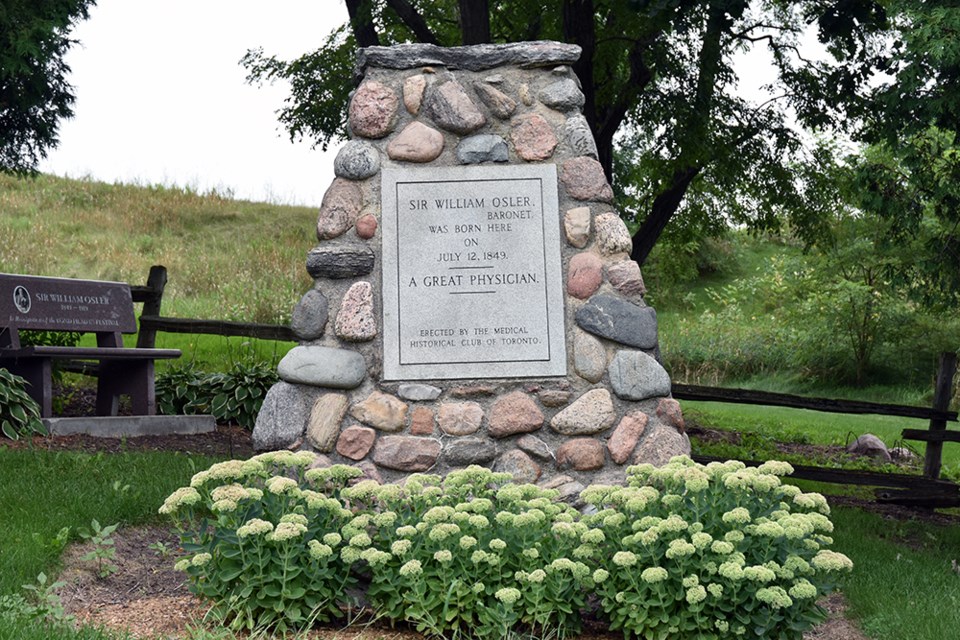Did you know ...
Both Bond Head and Newton Robinson were once bustling centres of activity, located on the key stagecoach route between Toronto and Barrie. Bond Head was also linked to Bradford, by a plank road.
An 1860 map of Bond Head lists a distillery, tannery, two manufacturers of agricultural implements, five blacksmith shops, two carriage and wagon-making companies, a dressmaker and milliner, two doctors, four general stores, two harness and saddle shops, a flour and sawmill, tinsmith, weaver, and the Brazell House hotel.
Newton Robinson, between 1860 and 1900, had four stores (including Chantler’s, which is still standing), two Inns, a woolen mill, tannery, four blacksmiths, a carriage and wagon maker, harness maker, shoemaker, tailor shop, barber shop, brick yard, cheese factory, planning mill, saw mill, grist mill, and a door and sash factory. The current population of Newton Robinson is just under 100 people.
The Hamlet of Bond Head is the birthplace of more than one famous Canadian. It was the home of Sir William Osler, known as the father of Canadian clinical medicine. Osler (born in 1849) was the youngest son of Rev. Featherstone Osler, Anglican Minister in Bond Head from 1836 to 1857. Sir William’s book, The Principles and Practice of Medicine, revolutionized the practice and study of medicine, and is still in print.
Another famous Bond Head son was Sir William Mulock. Born in 1843, the son of physician Thomas H. Mulock, William Mulock went on to study law at the University of Toronto, where he later served as Vice Chancellor, and then Chancellor. He was first elected to the House of Commons in 1882, serving until 1905. Mulock was Postmaster General of Canada (1896-1905), introducing Imperial penny postage; he established Canada’s first Department of Labour; and in 1905 chaired an inquiry that led to the regulation of telecommunications in Canada. Mulock was Chief Justice of the Supreme Court of Ontario, 1923-1936 – and briefly served as acting Lieutenant Governor of Ontario.
Just up the road in Newton Robinson is the farm of Hon. Earl Rowe, another Lieut. Governor of Ontario. Rowe was born in Hull, Iowa, in 1894 of Canadian parents, and raised in Simcoe County. He was Reeve of West Gwillimbury Twp. from 1919 to 1923 (he was only 24 when first elected), MPP from 1923 to 1925, and Member of Parliament from 1925-1935. Rowe briefly served as leader of the Conservative Party of Ontario, 1936-38, but resigned to return to federal politics, representing the riding of Dufferin-Simcoe. He was Ontario’s 20th Lieutenant Governor, from 1963 to 1968.
Rowe was also a breeder and trainer of standardbred horses, supporting Ontario harness racing, and could occasionally be seen from Highway 27, putting his trotters through their paces on his private track. After his retirement, he returned to his farm on Line 10, where he passed away in 1984.
Bond Head celebrated its 175th anniversary in 2012. Local songwriter Joe Pipino, a member of the Bond Head Music Group, composed The Bond Head Song in honour of the event. Pipino, who recently appeared at a Bradford Open Mic night with fellow Bond Head resident, artist Meade Helman, also wrote Toronto the Beautiful City, and The Bradford West Gwillimbury Song. A sample of the lyrics: “Bradford West Gwillimb’ree/It’s a town the rest of the world should see.”
Sources include Governor Simcoe Slept Here: The Legacy of West Gwillimbury, Archives at the BWG Public Library, and various online sources.
Do you know some interesting local history? Email the details to [email protected].



